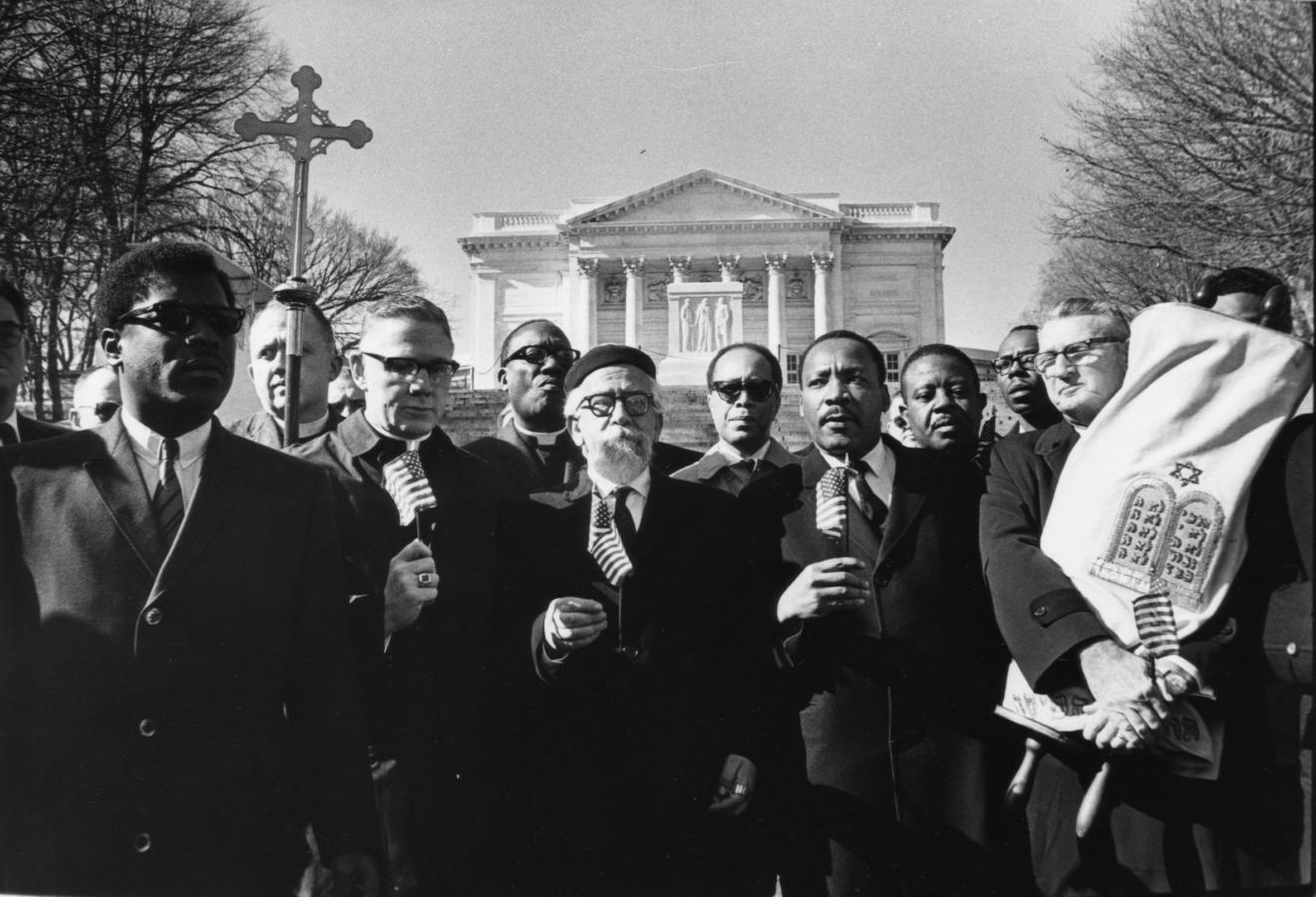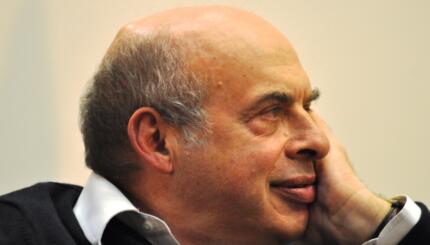The earliest Jews in the North American colonies related to Africans and their American-born offspring in the same ways most other white European colonists did. These Jews, largely immigrants from Spain and Portugal, derived much of their livelihood, directly or indirectly, from the slave trade. Approximately one third held slaves themselves, though few owned large plantations, and none publicly opposed the institution of slavery, even as enslaved blacks increasingly came to identify with the biblical Israelites and their escape from Egyptian bondage. In fact, the only southern Jewish rabbi to preach against slavery was pressed to resign by his own congregation. The highest political position yet held by a Jew in America was the vice president of the Confederacy.
This lack of concern for black people’s struggles began to change as Eastern European Jewish immigrants and southern black migrants encountered one another in rapidly growing northern cities. These Jews, often more politically radical than the German and Spanish Jews who preceded them in America, and having experienced similar persecution in Europe, were more attuned to the economic hardship and racial violence black Americans faced. Yiddish newspapers called black lynchings “pogroms,” and their newly organized unions and political groups were more likely than others to include black people. In many cities, the majority of Communist Party members were African Americans or Eastern European Jews.
But while both communities established civil rights organizations to combat bigotry and discrimination, they rarely worked together. And Jewish organizations, peopled and controlled by white Jews, largely ignored the growing number of Jews of color. When black groups approached Jewish groups for help, most Jewish groups balked, fearful of tying their fortunes to those they perceived as even more hated.
All this changed in the 1930s. Largely in response to Nazism abroad and rising anti-Semitism at home, Jewish groups reached out for allies and black organizations responded. Black and Jewish organizations increasingly worked together to challenge employment and housing discrimination, racial and religious violence, and exclusion from social, educational and professional organizations. These cooperative efforts were driven by self-interest, but it was a far more spacious notion of self-interest than before, rooted in the recognition that if any were not safe, none could be safe.
With your help, My Jewish Learning can provide endless opportunities for learning, connection and discovery.
After the war, this cooperation broadened to a fuller set of collaborations. Jewish groups filed court briefs in desegregation cases; the NAACP helped lobby U.N. delegates to support the creation of a Jewish state. Of the three well known civil rights workers killed at the start of Mississippi’s Freedom Summer of 1964: Andrew Goodman, Michael Schwerner and James Chaney, two were Jewish and the third African American. Along with other allies, African Americans and Jews together compelled the desegregation of medical associations, bowling leagues, beaches, restaurants, housing developments and department stores. In 1948, black and Jewish activists convinced New York to create a public university, the State University of New York, to compensate for racial and religious discrimination at private colleges. Joint lobbying efforts promoted more robust social welfare policies and emphasized the teaching of tolerance in public schools and community organizations. And increasingly, Jews — particularly secular and Reform Jews — identified the fight for civil rights as a Jewish ethical obligation.
But during these same years, economic and racial tensions destabilized the partnership. Eastern European Jews still saw themselves as outsiders, victims of white oppression. They failed to appreciate how their white skin helped them rise economically, even in the face of persistent anti-Semitism. Many of them operated businesses in black communities — often formerly Jewish neighborhoods – and prided themselves on their relative lack of racism. But to African Americans, these were white business owners exploiting poor and marginalized outsiders. Economic tensions between shopkeepers and customers, landlords and tenants, were often interpreted – by both sides — as black-Jewish fights.
The fact that white Jews had risen economically also led to some patronizing attitudes that inflamed tensions further. Jews saw their success as proof that liberal meritocracy worked and counseled patience, moderation, and compromise. Few understood when African Americans, concluding that white liberals could not understand the depth of systemic racism, turned toward more nationalist and seemingly radical ideas, broadly known as Black Power. Even as most white Jews clung to their faith in race blindness, African Americans understood that white America and its institutions would never be – and should not be – race blind.
By the middle of the 1970s, these differences splintered the coalition that had done so much to advance civil rights in America. Black and Jewish groups continued to collaborate on issues like aid to education, expanding the social safety net and assisting groups facing ethnic and racial violence around the world. But these were smaller and less public actions than those of the civil rights era, and the bond between the communities weakened as both increasingly turned inward. While they continued to share many of the same values and commitments, and African Americans and Jews continued to be the most reliable Democratic voters, their organizations no longer acted in concert or placed those shared commitments center stage. What remained were persistent class and racial tensions, and the anger and resentment they produced were increasingly openly expressed.
By the turn of the 21st century, the situation began changing once again. As the U.S. turned more politically conservative, and as issues important to both groups came increasingly under attack, black and Jewish groups began to tentatively reach out to each other again. White Jewish political and religious organizations also began a more robust engagement with Jews of color. Both outreach efforts expanded slowly, then exploded after the election of Donald Trump as president in 2016.
Trump’s views alarmed many in both communities, who saw their hard-won political gains slip away and their deepest values challenged. Many also recognized an increasing danger to their security. Local synagogues teamed up with black churches, national organizations reengaged with each other, and younger Jewish activists in particular energetically proclaimed their commitment to racial and economic justice. In 2019, several House members even formed a congressional Black-Jewish caucus.
In this new movement, many more groups have active, even leadership, roles, including Hispanic, LGBTQ, undocumented, indigenous and impoverished communities. Feminist groups, progressive churches and others now energetically embrace the broader and deliberately intersectional struggle for justice and inclusion. This has shifted the agenda of the new civil rights struggle as well as its political understandings. While black-Jewish relations remains a central commitment of many Jews, both black and white, it is now only one piece of a larger community of progressive activists of all religions and ethnicities.



